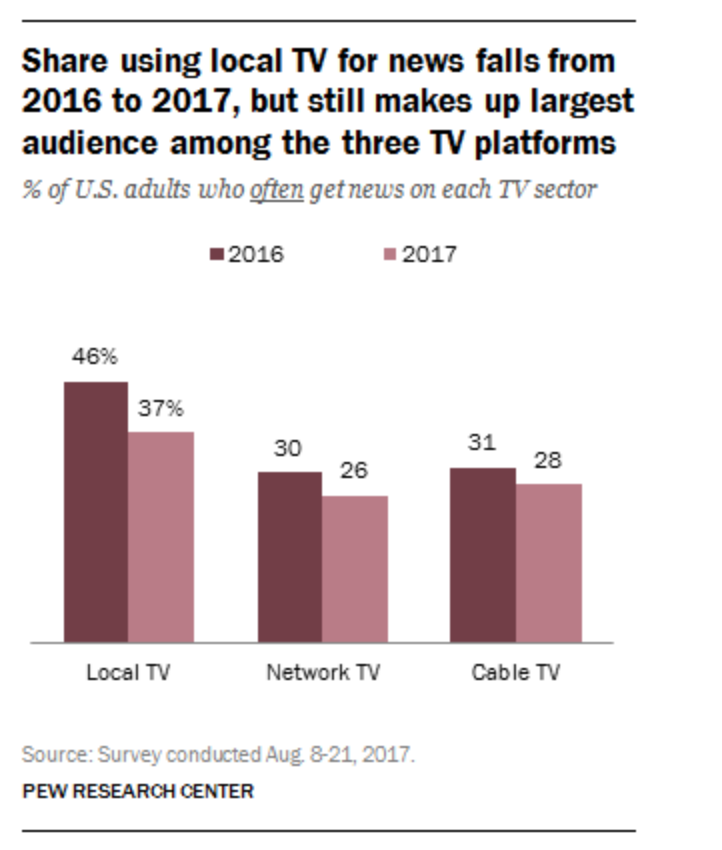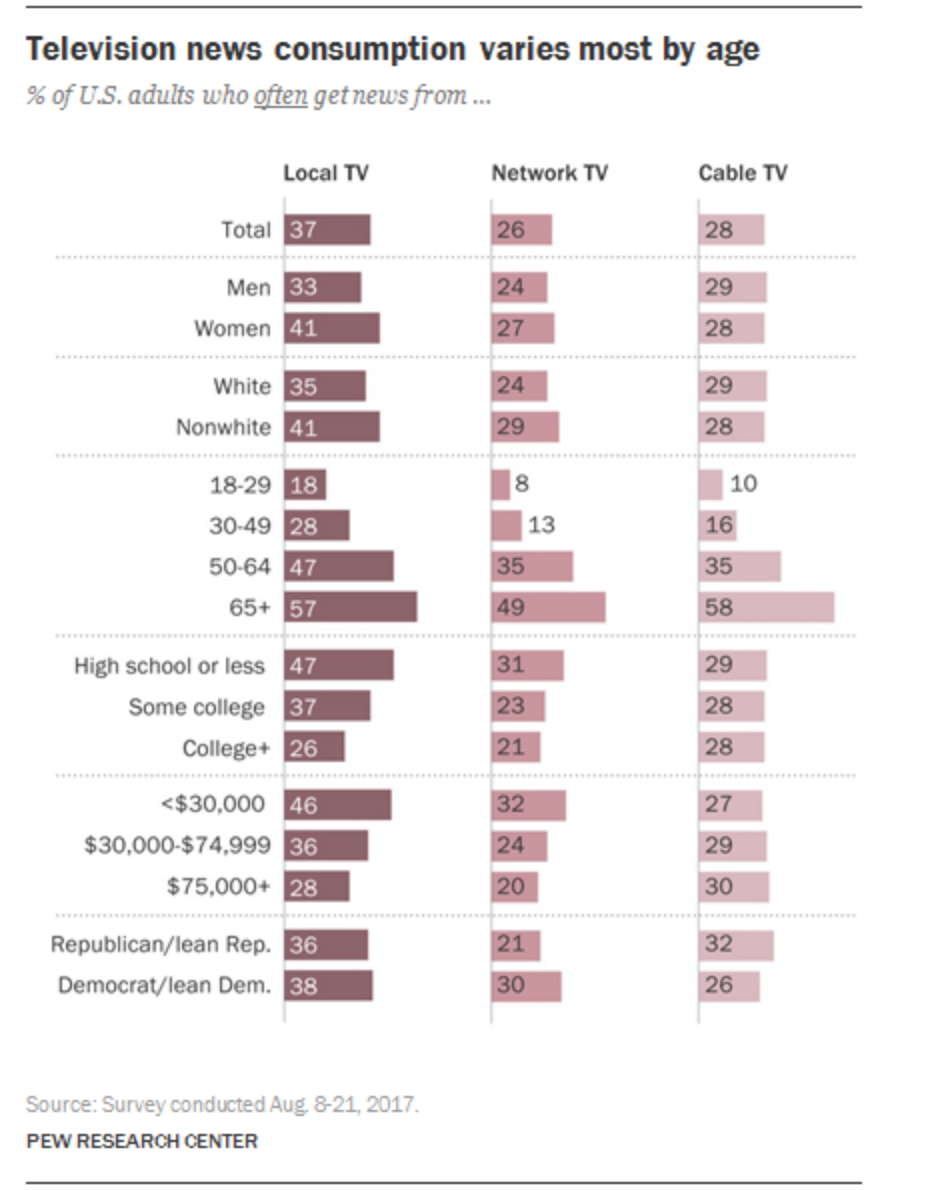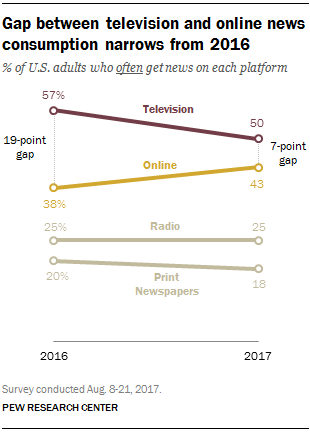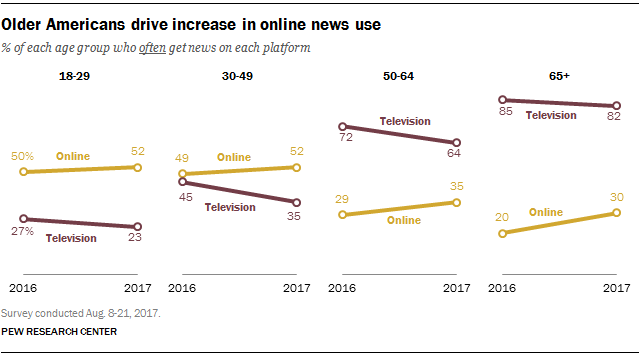Until now, local TV news viewership has been declining slowly. But a new Pew research study shows that from 2016 to 2017, the decline picked up speed.
Pew's associate director of journalism research, Katerina Eva Matsa, reported:
"Americans are relying less on television for their news. Just 50% of U.S. adults now get news regularly from television, down from 57% a year prior in early 2016. But that audience drain varies across the three television sectors: local, network and cable. Local TV has experienced the greatest decline but still garners the largest audience of the three, according to a new Pew Research Center analysis."
As you might expect, TV news generally attracts mostly older audiences. More than half of the people surveyed who are 65 and older said they watch local, network and cable TV news. But drop below that age, even to the 50- to 64-year-old bracket and viewership drops way off.
The study says only a fourth of college-educated Americans watch local TV news regularly compared with nearly half of Americans who have a high school level or less education. Women watch local news more than men, and non-whites told the Pew researchers they watch local TV news more than whites.
These series of charts tell the story:


The study was conducted Aug. 8-21, 2017, and included 4,971 respondents. The margin of sampling error is plus or minus 2.5 percentage points, so the change in local news viewing habits is significantly higher than the margin of error.
Matsa told Poynter, "One of the issues we have documented throughout our past three years of research is that younger people are turning less to local TV news. They turn to online. It has been gradual year to year." But a one-year nine-point drop is a significant drop. Matsa says it will take more years of trend data to make sense of why viewers are moving away from TV news. But Matsa says this survey does track along with similar findings from Nielsen.
Matsa added, "What we have seen is how the gap in online and TV news consumption is closing too."
She says television consumption is still leading online news consumption by about seven percent. The rise in the percent of people turning to online news is due to older Americans turning to online in increasing numbers. Pew's study also showed a jump in the number of non-whites and less-educated news consumers getting more of their news from online news sources.

The Pew study showed while all age-groups saw some drop in television news viewership in 2017, the biggest drops were in the 30- to 49-year-old audience.

The new Pew analysis shows Democrats and Republicans watching local TV news at about the same rate, with Democrats watching more network news and Republicans turning to cable news more often.
Pew's new analysis of audience trends does not try to address why local audiences are falling so much, but late last year, Gallup found that Democrats trust "mass media" significantly more than Republicans do. In fact, Gallup found Democrats have the highest level of trust in "mass media" in 20 years of surveys while Republicans' trust in "mass media" is at a new record low.






